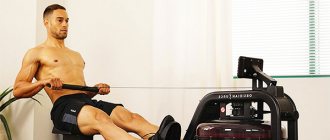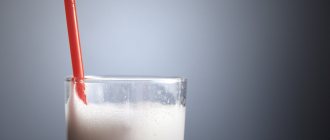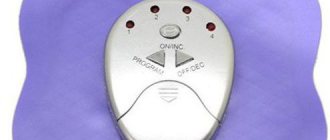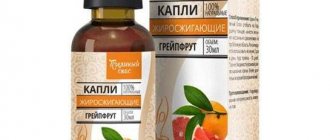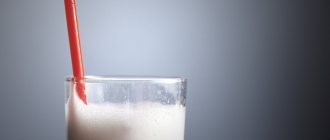What are lipolytics
Lipolitics are natural enzymes that accelerate lipid metabolism, improve blood microcirculation and activate metabolism in the body. They break down fats into glycerol and fatty acids, which in turn break down to carbon dioxide and water. In this form, they are easily removed naturally.
In the human body, the enzyme phosphatidylcholine converts substances ingested with food into lipids and energy for activity. If the process of lipid breakdown is slower than their synthesis, they accumulate in the body. This is how local fat deposits and a pathological degree of metabolic disorder appear - obesity.
IMPORTANT!
Tatiana Kuznetsova
Cosmetological techniques do not eliminate obesity. This disease is treated medically. Cosmetology corrects aesthetic defects in the form of local fat deposits.
Native lipolytics from soy have a composition identical to the endogenous enzyme and do not cause allergic reactions when administered.
Operating principle
Lipolitics can be direct or indirect. They differ in their mechanism of action and results.
- Direct lipolytics destroy the cell membrane of adipocytes and reduce their number, as a result of which they are replaced by connective tissue cells. Decay products enter the blood and lymph flow and are excreted from the body. Direct lipolytics significantly reduce local fat accumulations, but have a stressful effect on tissues. This group includes:
- phosphatidylcholine is a phospholipid of the lecithin group, regulates lipid, ion, and energy metabolism, participates in oxidative and respiratory processes in tissues;
- Sodium deoxycholate is an analogue of endogenous bile, breaks down intermolecular bonds in fats.
ATTENTION!
Tatiana Kuznetsova
Fat deposits and unevenness on the face are reduced after 2-5 injections with direct lipolytics.
- Indirect lipolytics do not disrupt the cellular structure of adipocytes, but reduce their volume. They speed up metabolism, stimulate blood microcirculation and lymph flow, and their gentle effect on fats is similar to natural weight loss. This group includes L-carnitine, caffeine, horse chestnut extract, artichoke and other plant extracts.
For procedures, cosmetologists use combined injections with direct and indirect lipolytics, as well as vitamins and minerals. Combination of drugs:
- breaks down adipocytes;
- regulates lipid metabolism;
- normalizes blood circulation and lymph flow;
- removes excess water and free fatty acids from the body;
- restores metabolism.
The result of lipolytics is comparable to facial contouring, but does not require surgical intervention.
Types and mechanism of action of lipolytics
All lipolytic agents are preparations consisting of natural ingredients, mainly of plant origin. They are divided into two types, differing in their mechanism of action: direct and indirect.
- Direct lipolytic preparations contain 2 or more components of plant origin. After administration, they destroy the membrane of the adipocyte (fat cell). Fat comes out of the damaged cell, is absorbed into the lymphatic vessels and is utilized by the body.
- Indirect lipolytics are not capable of destroying adipocytes, but only promote the removal of fatty compounds from the cell. The adipocyte itself remains intact and retains the ability to re-accumulate fat.
Based on the mechanism of action, it becomes clear that the group of direct lipolytic agents has a more pronounced and lasting effect. They are used to reduce the thickness of subcutaneous fat in problem areas: chin, malar and cheek areas.
Indirect remedies are less effective and are more suitable for eliminating minor defects. They are also used to consolidate the results obtained after hardware methods of liposuction (laser, cryolipolysis, cold liposuction) or the introduction of direct lipolytics.
A separate group of drugs used to reduce the volume of the face and neck includes drainage agents. They do not affect adipose tissue in any way, but help remove excess water, which actively accumulates in the subcutaneous fat.
Indications and contraindications
Lipolitics do not solve the problem of excess weight. They will not help you radically lose weight, but they will cope with local problems. The result of the procedure depends on the individual characteristics of the patient. After 45-50 years, when metabolic processes in the body slow down, lipolytics will not have a pronounced effect.
Indications for lipotherapy on the face:
- fat deposits in the jaws, cheekbones, cheeks;
- violation of the oval of the face due to gravitational ptosis;
- puffy cheeks;
- bags under the eyes due to fatty hernias of the lower eyelids;
- double chin;
- fleshy nose;
- violation of skin turgor.
Contraindications to the administration of lipolytics:
- pregnancy and lactation;
- childhood;
- allergy to components in the cocktail;
- Cholelithiasis, liver and kidney dysfunctions;
- heart rhythm disturbances;
- acute infectious and respiratory diseases;
- rosacea;
- blood clotting disorders;
- tuberculosis;
- HIV positive status;
- oncology;
- fresh skin lesions and neoplasms at injection sites;
- diabetes,
- epilepsy;
- tendency to form scars.
ATTENTION!
Tatiana Kuznetsova
The procedure is not performed if body temperature or blood pressure increases.
Use of lipolytics⠀
Cosmetologists are armed with various preparations that are successfully used to sculpt the figure and face. Using the finest needles, they are injected subcutaneously and stimulate the breakdown of fat cells on the face, neck, décolleté, arms, abdomen, and thighs.
In order to remove excess fat from sagging cheeks (jowls) and double chin, lipolytic cocktails can be used. Under their influence, fat is broken down and the resulting biodegradable substances are gradually eliminated from the body in a natural way. The process helps to significantly improve the oval of the face, the double chin and jowls are removed.
Sculpting requires from 2 to 10 procedures, the number of which is individual in each individual case.
The drug "Michelangelo"
To remove fat deposits in the chin area, a specialist can use the drug “Michelangelo”. The new Italian cocktail has:
- excellent anti-fat effect;
- easily tolerated by the body;
- perfectly tightens the skin.
This is the best composition, which is appreciated by leading European clinics. On average, 5 procedures, with an interval of 8-10 days, will be enough to significantly improve the oval of the face.
MPH complex
For fatty deposits that can be aggravated by vascular problems, the MPH mesococktail is more often used.
It, like other lipolytics, is administered by injection. Its complex composition expands the area of influence. The complex includes:
- sodium deoxycholate;
- natural dandelion extract;
- L-carnitine
The actions of each of them are successfully enhanced by other components. The result of their interaction is an improvement in metabolism, stimulation of the rapid breakdown and removal of fat cells through the lymph and circulatory systems.
Contraindications to the use of lipolytics
Like any procedure, the use of lipolytic cocktails has some contraindications:
- oncological diseases;
- pregnancy and lactation;
- neurological disorders;
- poor blood clotting;
- skin infection and inflammation;
- exacerbation of chronic diseases.
In addition, there is individual intolerance to the components of cocktails.
Advantages and disadvantages
Why patients choose injections with lipolytics:
The procedure is cheaper than plastic surgery or hardware, but gives a similar result.
No special preparation is required for the session.
There is no recovery period in the hospital.
The manipulation is performed without incisions or general anesthesia.
Lipolitics have an organic composition and do not accumulate in the body.
However, the procedure has its drawbacks:
The procedure with direct lipolytics is painful, so a local anesthetic is used.
It may cause allergic reactions.
Lipolysis activates lymph flow and blood circulation and affects the functions of the liver, heart and kidneys.
To maintain the result, the patient must follow the correct diet and consume enough clean water - at least 1.5-2 liters per day.
The procedure has contraindications and side effects.
Side effects
Allergic reactions: Quincke's edema, suffocation, vomiting, spasms occur due to an incorrectly selected drug formula. When a lipolytic is injected into the skin or muscle, and not into the subcutaneous fat, fibrosis develops - tissue compaction, and abscesses. A constant increase in temperature is possible due to infection if sanitary standards are not observed. Violation by the patient of the cosmetologist’s recommendations for recovery after the procedure leads to the same results.
ATTENTION!
Tatiana Kuznetsova
Complications require medical intervention.
Side effects after injections with lipolytics are temporary and go away without medical help. Bruises, hematomas, temporary fever and itching at injection sites disappear within 7-14 days. Nausea and dizziness after the procedure occur less frequently, as a result of individual intolerance to the components of the drug or excess dosage.
Procedure
Lipolytic agents are administered by injection. Before starting the procedure, the doctor determines the injection area and treats the skin with antiseptic agents to avoid infection. The problem area is pricked with a thin needle. The depth of administration of the lipolytic agent depends on the thickness of the skin and subcutaneous fat. The duration of the procedure itself ranges from 5 to 20 minutes. To achieve the desired result, several sessions of lipolytic therapy may be needed with breaks of 1 to 4 weeks.
Currently, non-injection methods of administering lipolytic agents are actively used: phonophoresis, laser technologies. The opinions of cosmetologists vary - some believe that the distribution of the drug is the same as with injection, others talk about lower absorption using hardware methods. ProfMedLab uses a well-proven injection method.
There are no significant restrictions after the procedure. For 24 hours after lipolytic therapy, you should not wet your face and it is recommended to avoid cosmetics, baths and saunas for several days. Otherwise, you can stick to your usual lifestyle.
Types of lipolysis
Lipolitics are available in the form of creams, injections, cocktails, capsules and tablets for oral administration. Cosmetologists work with the first two types of fat burners.
Lipolytic creams also contain vitamins and minerals. They reduce the amount of subcutaneous fat and tighten the contours of the face. These agents are not as effective as injections into the subcutaneous fat, but they must be used with caution. Active substances in lipolytic creams can cause allergic reactions and lead to aesthetic defects.
Injections are considered the most effective way to administer lipolytics - this way they are quickly delivered to the subcutaneous fatty tissue, and do not linger on the surface of the epidermis. Injections are also prescribed when, due to contraindications or the patient’s reluctance, it is impossible to perform cryolipolysis, RF lifting, laser procedures or ultrasound lipolysis.
FOR REFERENCE
Tatiana Kuznetsova
Lipolitics can be administered non-injectionally using iontophoresis and mesoscooters.
Drinking lipolytic cocktails, capsules, and tablets are used in sports nutrition and as part of weight loss programs. They supplement the daily diet and must be combined with active training. Uncontrolled oral intake of lipolytics leads to metabolic disorders and gastrointestinal diseases.

